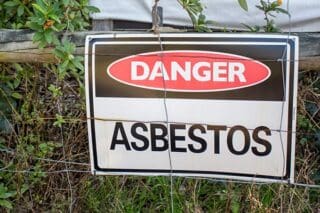
The dangers of asbestos exposure and the diseases it can cause were first documented in the 1920s. Today, the mineral asbestos is well-known as a carcinogen, though it is still legally used, imported and exported internationally. Recent data suggested that approximately 80% of the world lives in a country without a total asbestos ban. For decades, advocates have been pushing for a global asbestos ban, which would eventually eradicate asbestos diseases like mesothelioma and asbestosis. While some top producers, like Canada and Brazil, have finally introduced legislation to halt the use of the mineral, other countries like the United States continue to lag behind.
A recent study explored the best ways to reach a successful global ban. Researchers investigated international environmental conventions and the governments’ efficacy in implementing such regulations in over 108 countries that consumed asbestos. They found that adopting international guidelines from two conventions and a strong national government committed to a ban were both needed to enforce a total asbestos ban quickly and successfully.
A Look at Countries with Total Asbestos Bans
In the last thirty years, there have been two major international conventions that provided guidelines on how to achieve asbestos bans: the 1986 C162 Asbestos Convention and the 1989 Basel Convention. The C162 Asbestos Convention was led by the International Labour Organization and developed specific regulations in regard to the safety and use of asbestos, particularly in the prevention of workplace exposure.
Some of the national laws proposed in the different articles of the C162 convention included:
- Prohibiting the spraying of all asbestos products
- Prohibiting the use of crocidolite asbestos and all products containing crocidolite
- Reviewing exposure limits and exposure criteria regularly to update safety and prevention methods
- Removing asbestos materials for any purpose, including during demolition projects, must be completed by licensed professionals only
The Basel Convention outlined similar policies, as it focused on the reduction of hazardous wastes like asbestos. The convention additionally outlined policies around dismantling and recycling ships containing asbestos and other hazardous materials.
Following these conventions, a number of countries have moved toward an asbestos ban or stricter regulations. As of 2018, researchers noted that about 40% of the 108 countries included in their study actually submitted to a total ban. Some additional countries have completed steps in the direction of a ban, but have not acted on fully banning all types of asbestos. The study further noted that the United States, Hong Kong and Taiwan were the only asbestos consumers to not ratify either of the conventions.
Researchers looked into the ratification rates from both conventions, including how long bans took to implement and the success rates of the countries included in the study. They found that 34 countries ratified the C162 policies between 1987 and 2011, while 106 countries ratified the Basel Convention between 1989 and 2017. Between 1983 and 2018, the study noted 52 countries began enforcing total asbestos ban policies. Overall, the study found approximately 92% of the countries with a total ban first ratified the conventions and then implemented additional national ban regulations.
Adoption of total asbestos bans, however, took many years regardless of the ratification of the convention guidelines. Researchers found that countries that ratified both conventions took about nine years to implement a total ban. For the nations that only ratified one convention or didn’t ratify either, the average time to implement a total ban was about 17 years.
With this data in mind, the researchers concluded that the best way to successfully and quickly implement a global asbestos ban is ratifying international conventions, along with an effective national government dedicated to achieving a ban.
A Global Ban Is Progress Toward Eliminating Asbestos Disease
The researchers of this study, along with asbestos advocates, noted that a global asbestos ban is the best way to eliminate asbestos disease. As long as asbestos can still be used in any capacity, workers and the public remain at risk of exposure. However, a ban is just one important step in eliminating the dangers of asbestos exposure.
For instance, Iceland was the first country to ban asbestos, with the policy going into effect in 1983. However, the country is still seeing a rising incidence of mesothelioma. According to recent data, mesothelioma incidence in Iceland jumped from four diagnoses per million between 1975 and 1984 to more than 21 diagnoses per million from 2005 to 2014. This is partially because of the cancer’s long latency period. Mesothelioma and other asbestos diseases can take 10 – 50 years to first show symptoms.
A ban also doesn’t immediately solve the problem of past asbestos use. Because asbestos was used so widely in a variety of applications, most notably in construction materials, old buildings, schools and homes across the world still contain asbestos. It will take time and resources to properly remove all the remaining asbestos materials and fully eliminate the risk of fibers becoming airborne.
Regardless, this study may serve as a guide for countries interested in successfully implementing an asbestos ban and reducing the incidence of asbestos diseases among their citizens.




